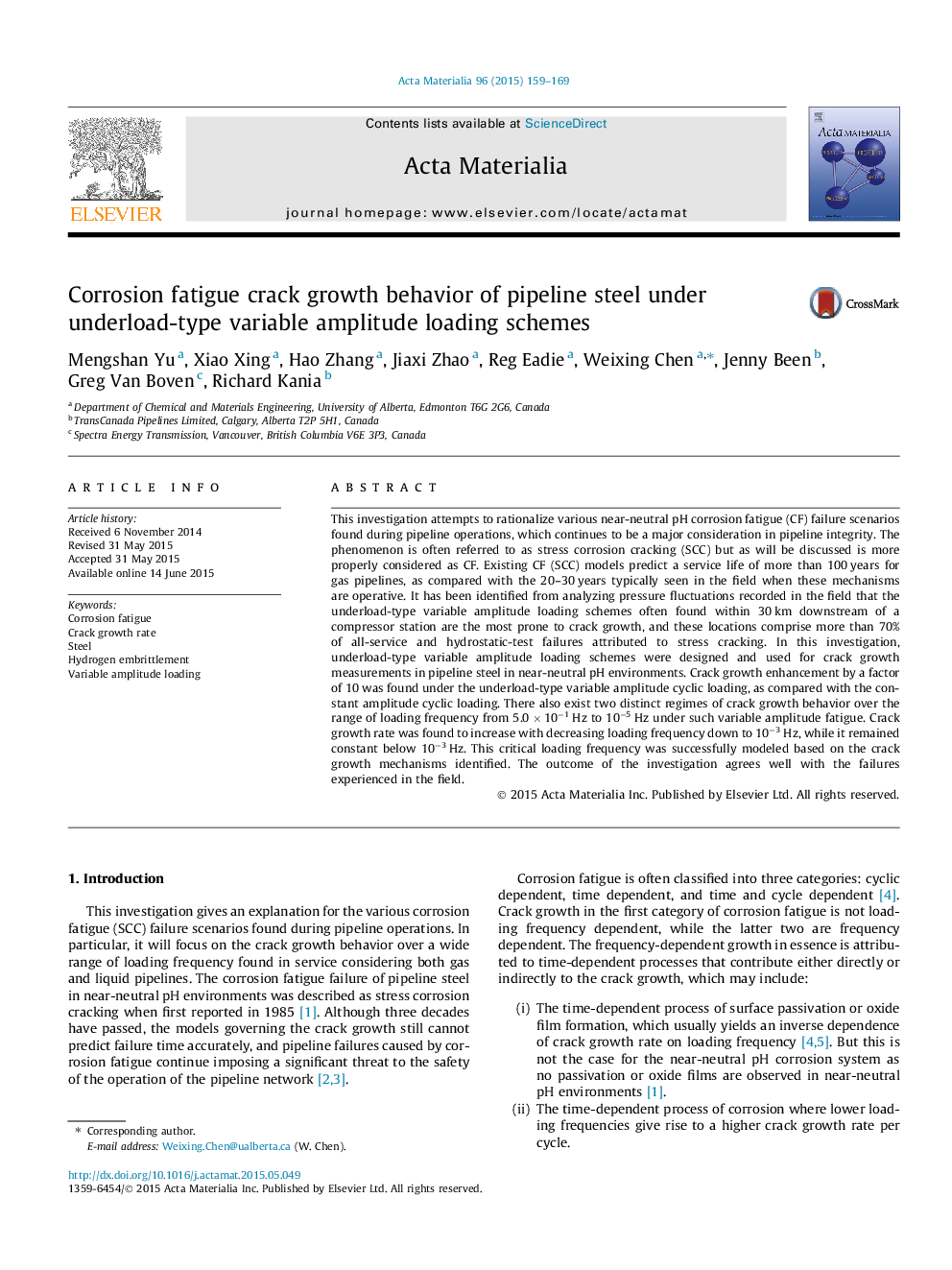| Article ID | Journal | Published Year | Pages | File Type |
|---|---|---|---|---|
| 7879693 | Acta Materialia | 2015 | 11 Pages |
Abstract
This investigation attempts to rationalize various near-neutral pH corrosion fatigue (CF) failure scenarios found during pipeline operations, which continues to be a major consideration in pipeline integrity. The phenomenon is often referred to as stress corrosion cracking (SCC) but as will be discussed is more properly considered as CF. Existing CF (SCC) models predict a service life of more than 100Â years for gas pipelines, as compared with the 20-30Â years typically seen in the field when these mechanisms are operative. It has been identified from analyzing pressure fluctuations recorded in the field that the underload-type variable amplitude loading schemes often found within 30Â km downstream of a compressor station are the most prone to crack growth, and these locations comprise more than 70% of all-service and hydrostatic-test failures attributed to stress cracking. In this investigation, underload-type variable amplitude loading schemes were designed and used for crack growth measurements in pipeline steel in near-neutral pH environments. Crack growth enhancement by a factor of 10 was found under the underload-type variable amplitude cyclic loading, as compared with the constant amplitude cyclic loading. There also exist two distinct regimes of crack growth behavior over the range of loading frequency from 5.0Â ÃÂ 10â1Â Hz to 10â5Â Hz under such variable amplitude fatigue. Crack growth rate was found to increase with decreasing loading frequency down to 10â3Â Hz, while it remained constant below 10â3Â Hz. This critical loading frequency was successfully modeled based on the crack growth mechanisms identified. The outcome of the investigation agrees well with the failures experienced in the field.
Related Topics
Physical Sciences and Engineering
Materials Science
Ceramics and Composites
Authors
Mengshan Yu, Xiao Xing, Hao Zhang, Jiaxi Zhao, Reg Eadie, Weixing Chen, Jenny Been, Greg Van Boven, Richard Kania,
